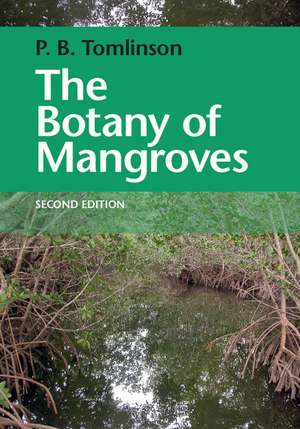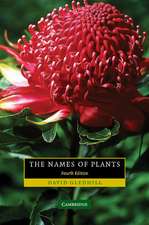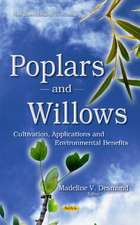The Botany of Mangroves
Autor P. Barry Tomlinsonen Limba Engleză Hardback – 26 oct 2016
Preț: 490.76 lei
Preț vechi: 551.42 lei
-11% Nou
Puncte Express: 736
Preț estimativ în valută:
93.90€ • 98.31$ • 77.70£
93.90€ • 98.31$ • 77.70£
Carte disponibilă
Livrare economică 17-31 martie
Preluare comenzi: 021 569.72.76
Specificații
ISBN-13: 9781107080676
ISBN-10: 1107080673
Pagini: 432
Ilustrații: 128 b/w illus. 24 colour illus. 13 tables
Dimensiuni: 182 x 253 x 24 mm
Greutate: 1.05 kg
Ediția:2Revizuită
Editura: Cambridge University Press
Colecția Cambridge University Press
Locul publicării:New York, United States
ISBN-10: 1107080673
Pagini: 432
Ilustrații: 128 b/w illus. 24 colour illus. 13 tables
Dimensiuni: 182 x 253 x 24 mm
Greutate: 1.05 kg
Ediția:2Revizuită
Editura: Cambridge University Press
Colecția Cambridge University Press
Locul publicării:New York, United States
Cuprins
Part I. General Account: 1. Historical prelude; 2. Ecology; 3. Floristics; 4. Biogeography; 5. Shoots and leaf systems; 6. Structural biology; 7. Root systems; 8. Water relations and salt balance; 9. Flowering; 10. Seedlings and seeds; 11. Mangroves and people; Part II. Detailed Description of Families: Acanthaceae; Anacardiaceae; Apocynaceae; Arecaceae (Palmae); Asteraceae (Compositae); Avicenniaceae (Acanthaceae); Bataceae (Batidaceae); Bignoniaceae; Bombacaceae (Malvaceae: Bombacoideae); Celastraceae; Clusiaceae (Calophyllaceae); Combretaceae; Ebenaceae; Euphorbiaceae; Fabaceae (Leguminosae); Flacourtiaceae; Goodeniaceae; Lecythidaceae; Lythraceae; Malvaceae (Malvoideae); Melastomataceae; Meliaceae; Myristicaceae; Pellicieraceae; Plumbaginaceae; Primulaceae (Myrsinaceae: Myrsinoideae); Pteridaceae; Rhizophoraceae; Rubiaceae; Rutaceae; Sapindaceae; Sapotaceae; Sonneratiaceae (Lythraceae); Sterculiaceae (Malvaceae: Sterculioideae); Tiliaceae (Malvaceae: Brownlowioideae).
Recenzii
'When P. B. Tomlinson first wrote his botanical account of mangroves three decades ago, these much-maligned trees were largely unknown as the places of wonder and value that many have come to appreciate today. His words have truly placed mangroves in a much better light - better understood and better valued. This new edition, with its cogent updates on mangrove plants and their associates, along with informative colourful plates, is once again needed to inspire and motivate a new generation of devotees. Mangrove shorelines are threatened by the current double dilemma of global climate change coupled with increasing human demands and direct pressures. Natural ecosystems like mangroves are in serious retreat and decline. With this second edition of The Botany of Mangroves, we have a point of reference, and an opportunity to revisit the all-encompassing view seen from the ample shoulders of P. B. Tomlinson.' Norman C. Duke, Centre for Tropical Water and Aquatic Ecosystem Research (TropWATER), James Cook University, Townsville
Review of the previous edition: 'This book should be required reading for any serious student of mangroves.' Ariel E. Lugo, Ecology
Review of the previous edition: '… a precise treatment of mangrove botany …' Howard J. Teas, Economic Botany
Review of the previous edition: '… of considerable value to students and professionals alike. I can warmly recommend it.' C. J. Humphries, Oryx
Review of the previous edition: 'This book should be required reading for any serious student of mangroves.' Ariel E. Lugo, Ecology
Review of the previous edition: '… a precise treatment of mangrove botany …' Howard J. Teas, Economic Botany
Review of the previous edition: '… of considerable value to students and professionals alike. I can warmly recommend it.' C. J. Humphries, Oryx
Notă biografică
Descriere
A new edition of a key text on ecologically and economically vital intertidal tropical plant communities.









